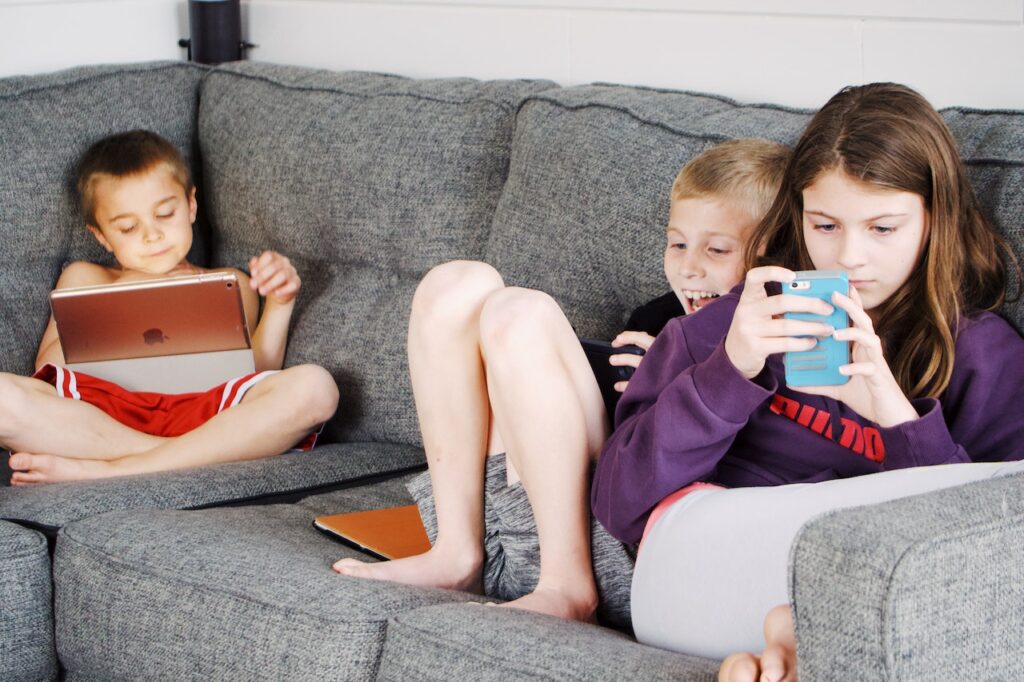🌟📱 In today’s digital age, technology plays a significant role in education, offering countless opportunities for interactive learning and exploration. However, it’s important to strike a balance between utilizing technology for educational purposes and managing screen time effectively. We’ll delve into the topic of balancing screen time for productive learning, providing insights and strategies to help you make the most of technology while maintaining a healthy relationship with it. Let’s embark on a journey of digital learning and find the perfect harmony between education and technology!
1. Set Clear Goals and Objectives:
🎯📝 Start by setting clear goals and objectives for your technology use in education. Identify the specific areas or subjects where technology can enhance your learning experience. Whether it’s researching, collaborating, or accessing educational resources, having defined goals will help you stay focused and purposeful in your technology usage.
2. Embrace Digital Learning Tools:
💻📚 Explore the plethora of digital learning tools available that can enhance your educational journey. From interactive educational apps to online platforms and multimedia resources, there is an abundance of options to support your learning process. Select tools that align with your learning style and needs, and incorporate them into your study routine.
3. Establish Boundaries and Time Limits:
⏰📱 Set boundaries and time limits for your screen time. While technology can be beneficial, it’s crucial to balance it with other activities and maintain a healthy lifestyle. Allocate specific time slots for educational technology use and ensure you have dedicated periods of screen-free time for physical activity, social interaction, and relaxation.
4. Practice Mindful Technology Usage:
🧘♀️🔎 Practice mindful technology usage by being aware of how you engage with educational content. Avoid mindless scrolling or getting distracted by unrelated apps or websites. Stay focused on your educational objectives and use technology intentionally for learning purposes. Be conscious of your screen time and make deliberate choices about the content you consume.
5. Collaborate and Engage:
👥💬 Utilize technology as a tool for collaboration and engagement with your peers and educators. Participate in online discussion forums, virtual study groups, or educational platforms that foster interactive learning. Engaging with others in a digital environment can enhance your understanding of concepts, encourage critical thinking, and expand your perspectives.
6. Offline Learning and Exploration:
📚🌍 Remember that learning extends beyond the screen. Balance your technology use with offline learning and exploration. Read physical books, engage in hands-on experiments, visit libraries or museums, and engage in outdoor activities that complement your educational journey. Combining offline experiences with digital resources creates a well-rounded and holistic learning approach.
7. Digital Wellness and Self-Care:
💙📴 Prioritize your well-being and practice digital wellness and self-care. Take regular breaks from screens, practice mindfulness techniques, and engage in activities that promote relaxation and stress reduction. Develop a healthy lifestyle that includes physical exercise, face-to-face social interactions, and hobbies that are not screen-dependent.
8. Evaluate the Quality of Digital Content:
🔍📊 Be discerning in evaluating the quality and credibility of digital content. With the abundance of information available online, it’s important to develop critical thinking skills and assess the reliability of sources. Rely on trusted educational platforms, reputable websites, and peer-reviewed resources to ensure the accuracy and relevance of the content you engage with.
9. Seek Guidance and Support:
🤝📚 If you’re unsure about balancing screen time or utilizing technology effectively for educational purposes, seek guidance and support from educators, mentors, or technology specialists. They can provide
valuable insights, recommendations, and strategies tailored to your specific needs and help you make the most of technology in your learning journey.
10. Reflect and Adapt:
📝🔄 Regularly reflect on your technology usage and its impact on your learning experience. Assess what strategies work best for you, what tools are most effective, and make adjustments as needed. Learning is a dynamic process, and by reflecting and adapting your technology usage, you can optimize your learning potential.
🌟📱 Balancing screen time for productive learning is about harnessing the power of technology while maintaining a healthy relationship with it. Set goals, embrace digital tools, establish boundaries, practice mindful usage, and engage in offline learning. Remember, technology is a valuable tool, but it’s your deliberate and intentional approach that makes it truly transformative. Embrace the opportunities it offers, and let technology be a catalyst for your educational growth and success! #EdTech #DigitalLearning #CollegeTutors

